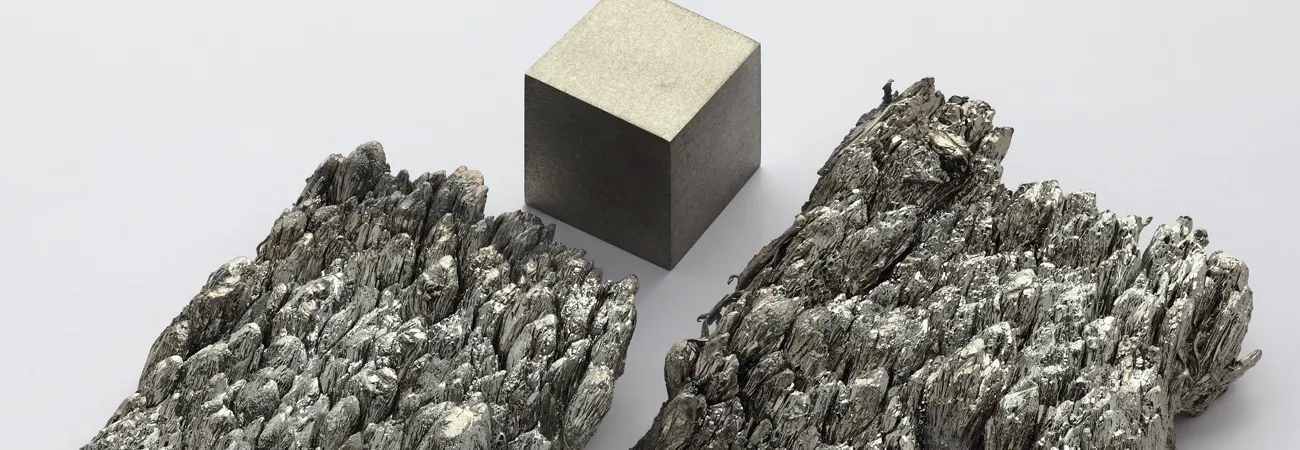i ECONOMY
Mine tailings, especially the water used during the mining operations, must be treated and processed for extraction of rare earth elements (REEs), including scandium. The treatment of tailings will support the local industry and protect the environment. Chief Geologist ‘Koh-e-Daleel Minerals Company (Pvt) Ltd’ Abdul Bashir said this while speaking to WealthPK. Soft textured scandium is a transitional metal and the 50th most abundantly occurring element on the earth. When exposed to the air, its natural silvery white hue develops into yellowish or light magenta. It is paramagnetic in nature but turns into a super-conductor at -459.6ᵒ F at the exceeding pressure of 180 kilobars. More than 800 minerals bear its traces. But it can be extracted from the mine residues and water. Scandium can be considered an important future element. Various rock formations keep the traces of scandium in varied amounts. Scandium occurrence in argillaceous rocks is higher. In sedimentary rock formations, its content is low. In short, the chances of scandium existence are higher at the places where both sedimentary and igneous rocks are found, and the igneous activity has taken place.
Sedimentary iron stones, phosphatic shale, nickel laterite ores, and iron oxide tend to be enriched in scandium. Sandstone and limestone also bear its traces. Naturally, its primary ores are kolbeckite (a phosphate mineral species) and thortveitite occurring in granitic pegmatites. Both rock formations occur in sizeable quantities in Pakistan. A lot of work is required to initiate scandium recovery from them. But mine residues are a promising source for its extraction. Scandium may occur in different places – in Balochistan province, Ras Koh Mountain range, and areas of Chagai, Wad, Khuzdar, Muslim Bagh, and Zhob. Rocks here have intruded into sedimentary rocks. Here, shale and sandstone or limestone are well metamorphosed with time. The Northern Areas also have suitable geological environments to find it. It is necessary to undertake green field exploration. Sophisticated and advanced equipment is required for its detection and extraction. Explaining further, he said the water used during large-scale mining operations was not processed to recover the trace elements.
Usually, it is a little bit treated to reuse for mining operations, while small-scale miners let it go to the water reservoirs or sewers which is harmful. By proper processing, it can be made more productive. Large-scale miners can afford the cost, but small-scale miners need government coordination in this regard. It may be a technological challenge, but once established, it will benefit in the long run. Scandium is typically produced as a by-product during the processing of various ores – zirconium, iron ores, titanium, thorium, uranium, tungsten, tin, tantalum, apatite, nickel, and cobalt, etc. Mine tailings and water released during the processing of these mineral elements bear its traces and can be a possible source for recovering scandium. It can be recovered from bauxite residue, raffinate copper leach solution, and waste acid of titanium pigment. The other primary sources to recover it are ore feedstock, while the secondary mining sources are metallurgical slags, residues, or concentrates. It must be made obligatory for all mine owners and mining companies to treat water in a productive and eco-friendly way.
To extract scandium from mine residues and earthen sources, Pakistan can get coordination from its friendly countries, added Abdul Bashir. Scandium is vital for many industrial products. No element other than scandium adds strength to lightweight aluminum alloys. It is used to weld high-strength aluminum alloys to avoid solidification. Its aluminum-based alloys are further used in many alloys to produce stronger, non-corrosive alloys and to manufacture sports goods, bikes, and aerospace bodies/equipment. Scandium is a good catalyser to polish glass. The other scandium-based industrial products are televisions, high-intensity metal halide lamps, analytical standards, electronic components, oil well tracers, and fuel cells. The global scandium market was valued at US$548.9 million in 2022 and was projected to reach US$859 million by the year 2028 at a compound annual growth rate (CAGR) of 7.75%. China, Russia, Ukraine, and Kazakhstan are its main global producers. Some minerals expected to contain scandium traces are mined in promising quantities in Pakistan – nickel, cobalt, copper, bauxite, etc. Pakistan can get Chinese coordination for extraction of scandium from different available sources.
Credit: Independent News Pakistan (INP)








